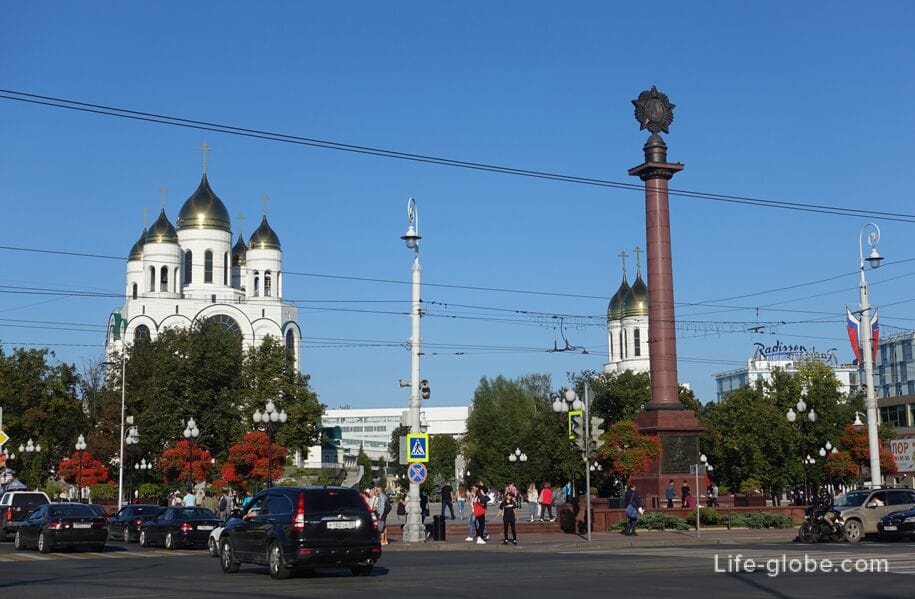
The reduit of the bastion "Astronomical" or Astronomical Bastion is a historical monument located in the center of Kaliningrad at the intersection of Guards Avenue and Field Marshal Rumyantsev Street.
Astronomical Bastion (Sternwarte Bastion - Observatory Bastion) It was a fortification built during the construction of the Second Val Ring of Konigsberg in 1856-1860.
Such an unusual name "Astronomical Bastion", which was established in the Soviet period, received the reduit of the bastion from the once located opposite (now defunct) The Konigsberg Bessel Observatory, erected in 1813 by the Prussian mathematician and astronomer Friedrich Bessel.
The Konigsberg Observatory of the Albertina University of Konigsberg (Sternwarte Königsberg) was a Prussian astronomical observatory that existed from 1813 to 1944, in which such famous astronomers as Friedrich Wilhelm Bessel, Friedrich Wilhelm Argelander and Arthur Auvers worked. In those years, Konigsberg became one of the leading research centers of astronomy in Europe. In 1851, the first photograph of a total solar eclipse in the form of a daguerreotype was taken at the Konigsberg Observatory.
The development of military affairs in the 19th century led to the fact that by the end of the century the Second fortification did not fulfill its functions. In 1910, the earthen rampart of the bastion, together with the caponiers, was demolished, and a railway was laid instead of the former water fortress moat.
From the bastion remained (and still exists) only the reduit (inner part) is a semicircular two-story structure with a powerful brick vault. When performing its military-defensive functions, the bastion's reduit was intended for firing at the moat from the flank side and had the largest number of architectural elements among similar structures in Konigsberg. Among the existing elements, you can stand out: square turrets, lancet-shaped window arches, cross vaults and numerous embrasures.
During the Battle of Konigsberg, the Wehrmacht command post was located in the Bastion Observatory. During the storming of Konigsberg in April 1945, Reduit practically did not participate in hostilities.
Currently, the Reduit "Observatory" is an architectural monument of regional significance. It has a courtyard. Its premises are used for commercial purposes.
Photos of the exterior walls of the reduit
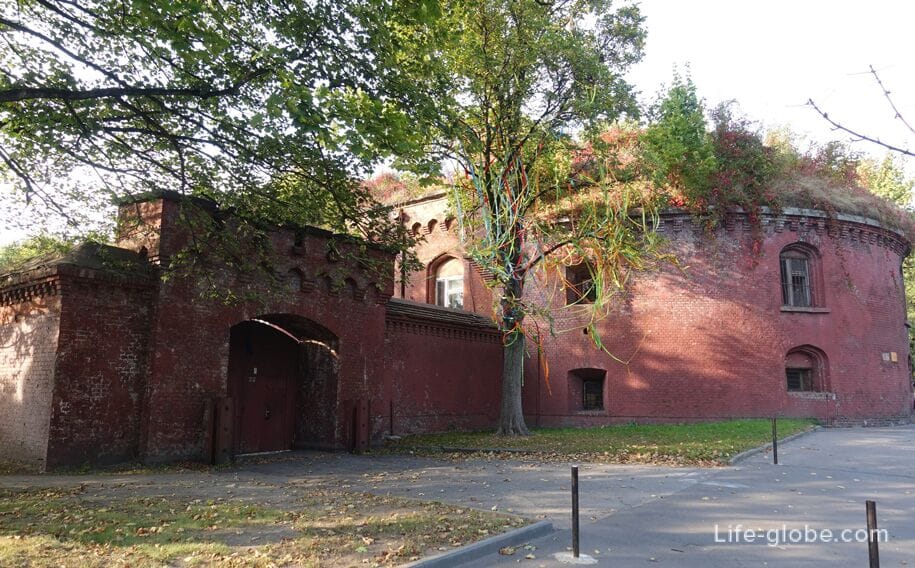

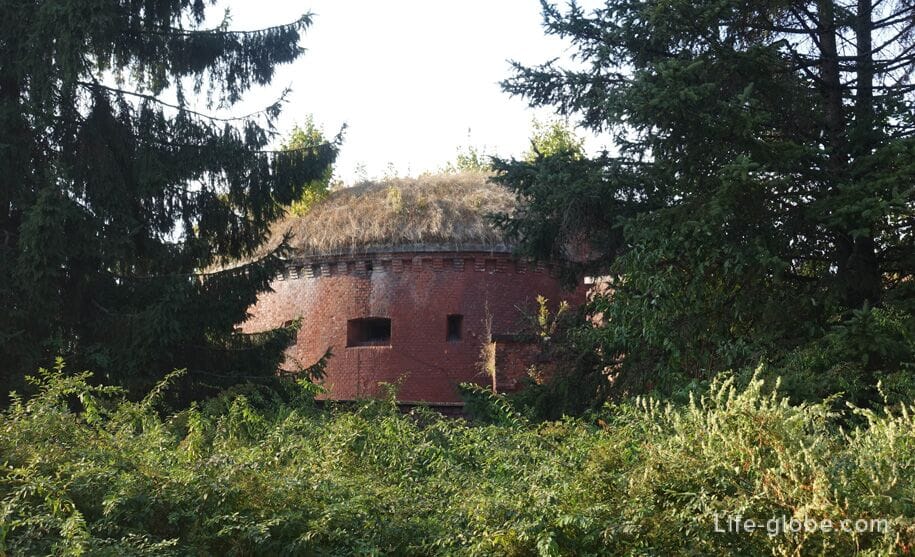
Photo of the reduit courtyard

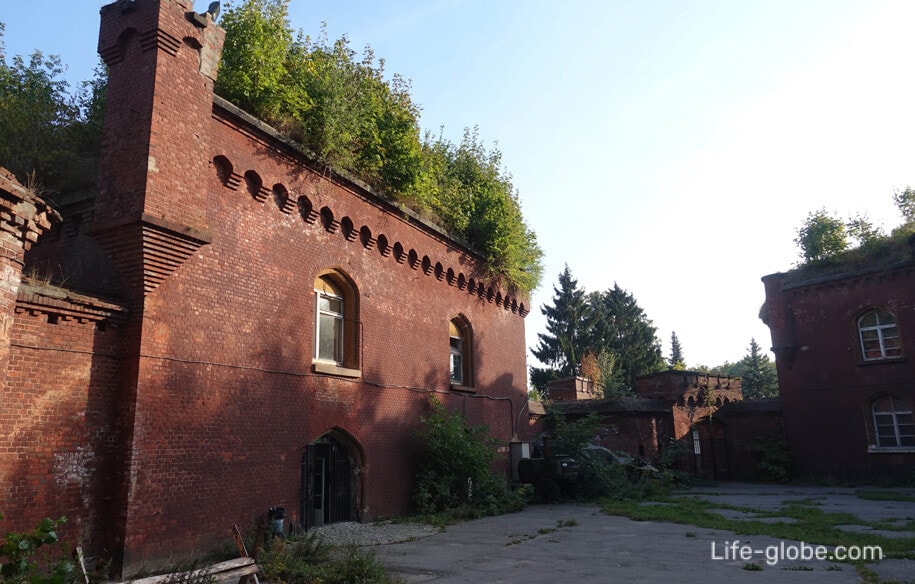
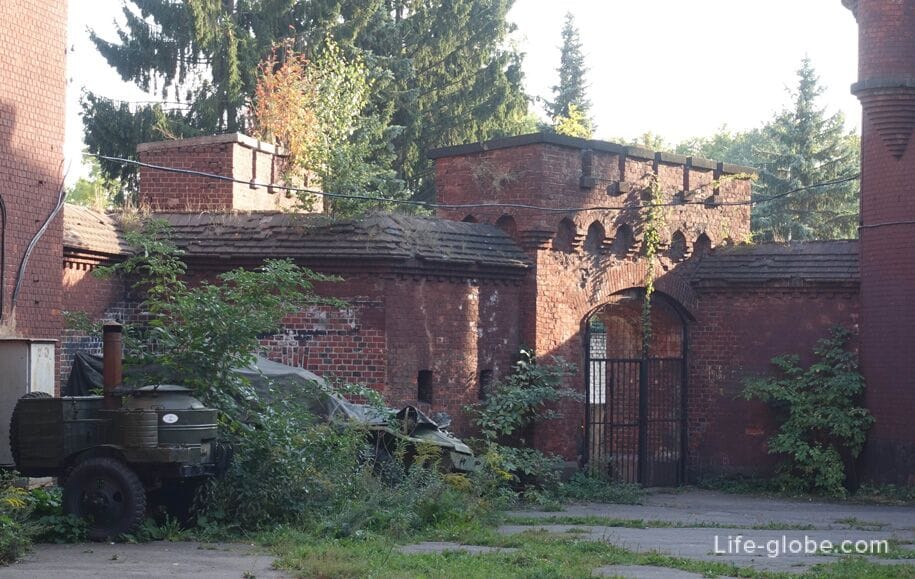
Near the reduit are:
- a small square with a monumental monument to the heroes of the First World War, established by the Russian Military Historical Society in the year of the centenary since the beginning of the First World War. The monument was opened in 2014.


The monument to the heroes of the First World War consists of four bronze sculptures located on a high pedestal, personifying representatives of different classes who participated in the First World War: a noble officer, a student, an ensign and a peasant soldier. According to the authors of the monument Salavat Shcherbakov, the monument symbolizes the unity of all classes at the beginning of that war;
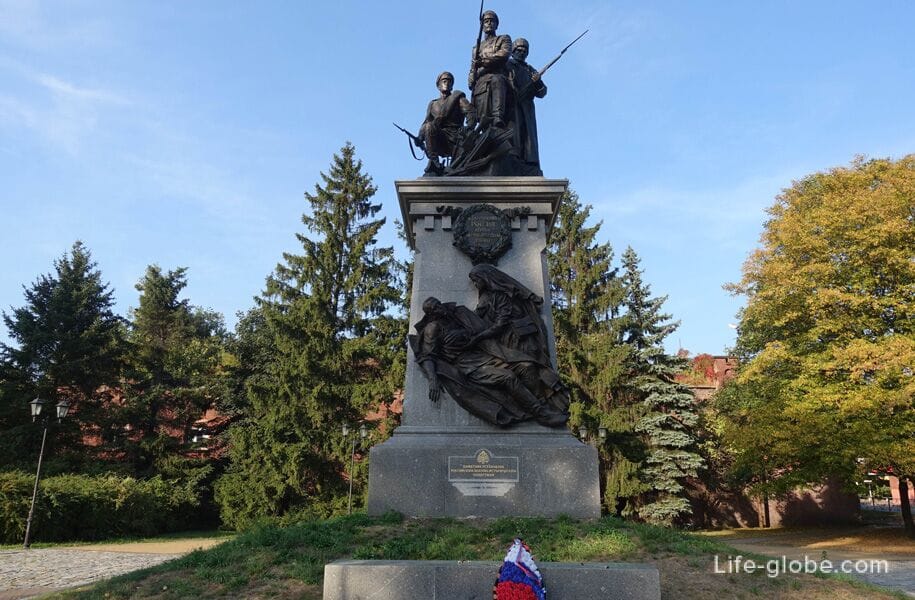
- memorial stone to Field Marshal P.A. Rumyantsev;
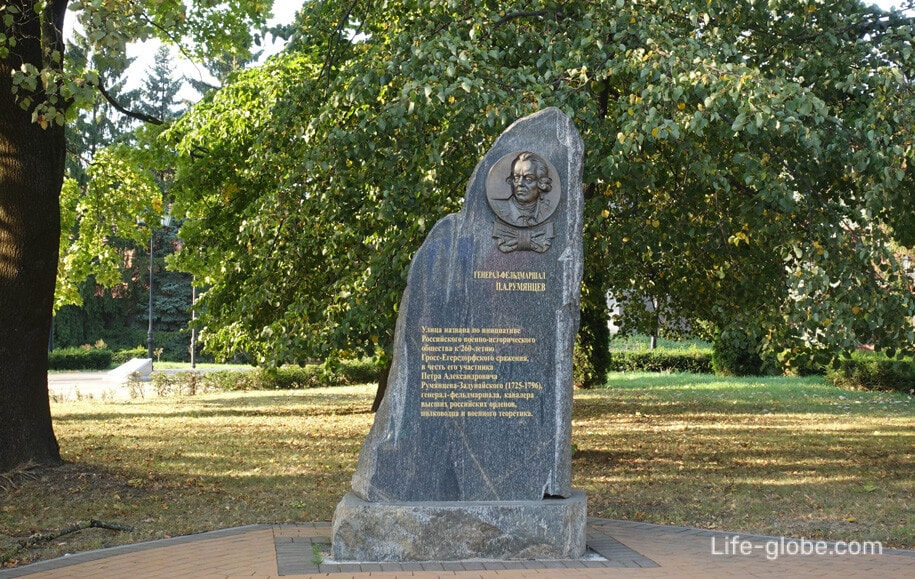
- The Ausfahl Gate is one of the seven surviving city gates of Konigsberg. In 1993-95, the Orthodox chapel of St. George the Victorious was built on the upper platform of the Ausfalian Gate, intended for combat;

- Victory Park, which was founded by veterans of the Great Patriotic War on May 8, 2000, in honor of the 55th anniversary of the Victory. On the territory of the park there are: the wall of glory, the mass grave of Soviet soldiers, a memorial monument to "Soldiers-scouts", a monument to border guards of all generations, the Alley of memory of border guards;

Victory Square, the central square of Kaliningrad, is located not far from the reduit of the Astronomical bastion.
